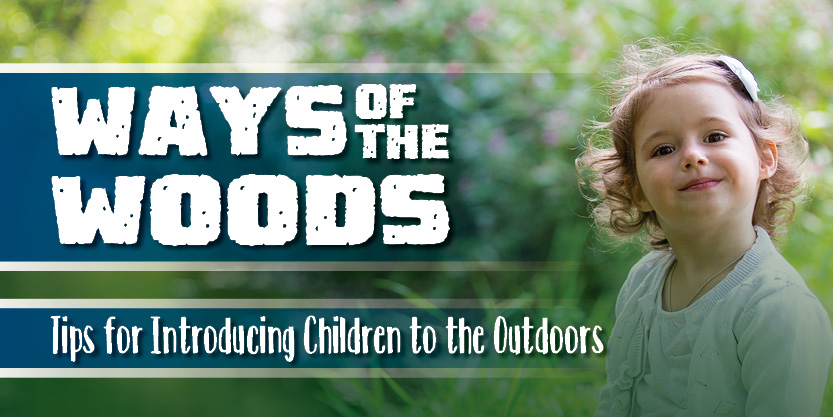Ways of the Woods: Tips for Introducing Children to the Outdoors
By Bill Carman
Slimy fish. Bugs. A branch scratching the tent on a windy night. A bear behind every tree. Getting lost.
Or… The glisten of a dewdrop on a spider web. The music of wild geese. The splendor of a butterfly. The tug of a fish on the line.
The beauty of wildflowers and autumn colors.
A child’s perspective of the outdoors can be a nightmare or a magical encounter.
How parents introduce children to the experience can affect their relationship with the outdoor world for the rest of their lives.
As a society, we have drifted away from our agrarian roots, from farms to cities.
A century ago, a 10-year-old was at home in the milking barn or in the woods.
Today’s 10-year-old is more at home in front of the TV or computer, or at best, playing soccer.
The outdoors is colored by what Disney brings into our living rooms. Our children do not see the link between the Big Mac and the cow.
We are no longer participants in the web of life, and many of our children are not exposed to the process, just the products.
Exposure to nature is vital to understanding the world as a whole and how we fit. Here are some tips for introducing a child to the outdoors.
Go Step by Step
The Girl Scouts use an eight-step program that begins with simple outdoor experiences, progresses through outside cooking and cabin sleeping, and culminates with multi-day camping trips.
Outdoor experiences are targeted that offer a good balance between quality and quantity, are authentic, stimulate all of the senses, have web-of-life relationships, are challenging, fun, have low environmental impact, involve the girls in the planning, and utilize positive role models.
Begin With Immediate Gratification
Remember that small children have little patience. For instance, take a beginning angler to a pond where catching lots of bluegill is a sure bet.
Find a Mentor
My parents were not outdoorsy, but my grandmother was, and she taught me how to fish.
I had a neighbor who taught me to track game, trap and to “walk a little and look a lot.” Now, every time I entice a trout to a fly or harvest a buck, I pay tribute to those two fine people.
Mentors can be found in scout troops, churches, PTA’s, and conservation organizations.
Vary Your Outdoor Experiences
Take them to Raven Run, McConnell Springs or the Salato Wildlife Center.
Get them involved in Scouting. Many conservation non-profits such as the Rocky Mountain Elk Foundation and National Wild Turkey Federation have youth programs.
Think Big
My hands-down recommendation for the ultimate youth outdoor experience is the Boundary Waters Canoe Area Wilderness in northern Minnesota.
It is not expensive, and the experience can range from canoeing around a beautiful lake and staying in a public campground, to paddling deep into the wilderness, carrying your camping gear and seeing no one for days on end.
The cry of a loon on a misty northern lake is an experience no child should miss.
Here are some local contacts for outdoor experiences for children:
Raven Run Nature Sanctuary – (859) 272-6105
McConnell Springs – (859) 225-4073
Salato Wildlife Center – (502) 564-3596
KY Conservation Camps – (502) 564-3400
Girl Scouts – (859) 293-2621
Boy Scouts – (859) 231-0494
Bill Carman recently retired after a decade as Regional Director for the Rocky Mountain Elk Foundation and is currently teaching his grandchildren the ways of the woods.

